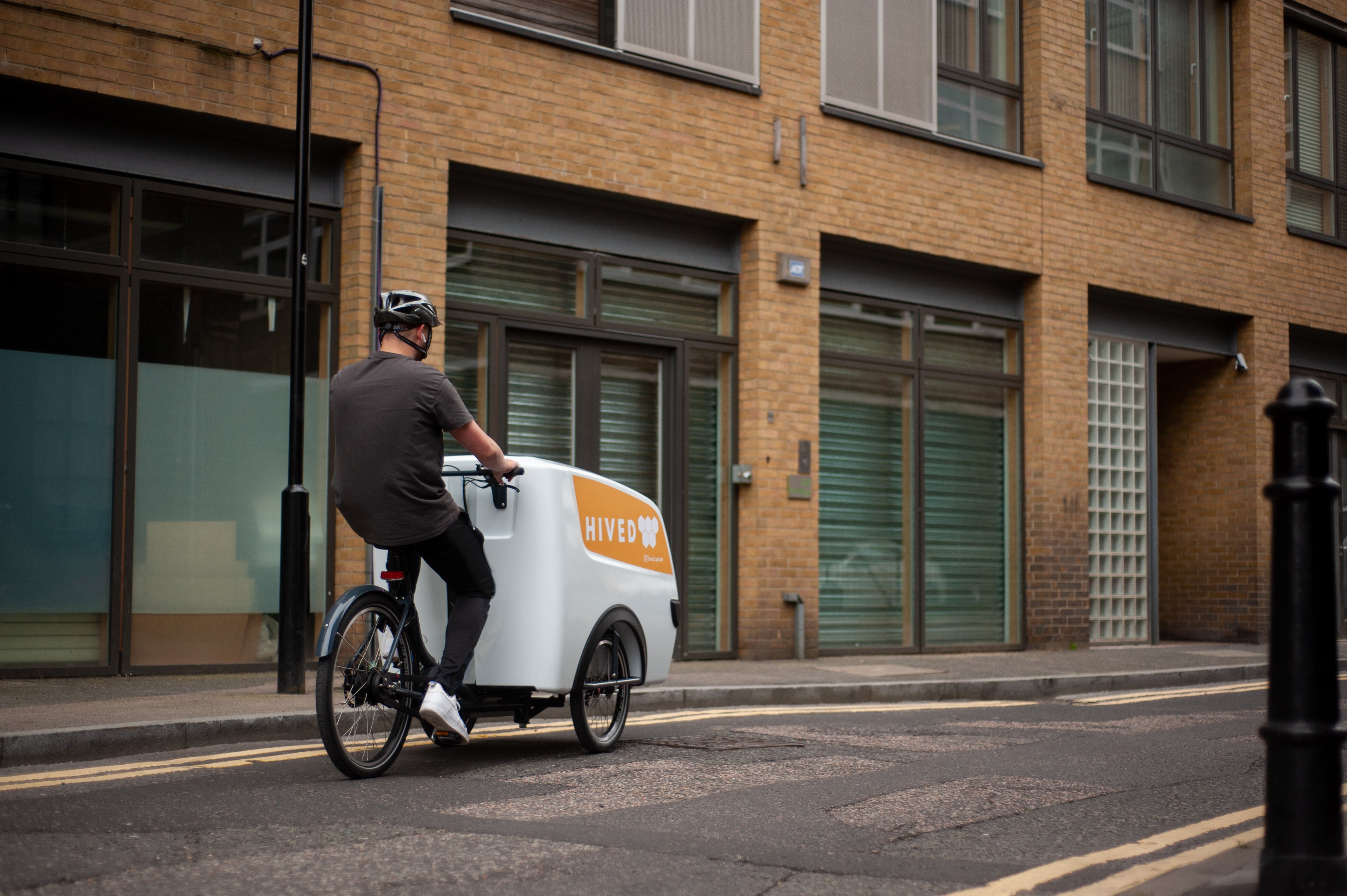
UK Startup HIVED Raises $42 Million to Expand Electric Delivery Network Nationwide
Electric Revolution in Logistics: HIVED Secures $42M to Reshape UK's Parcel Delivery Landscape
In the shadow of London's historic skyline, a fleet of sleek Mercedes eActros 600 electric trucks hums quietly through congested streets, representing not just a departure from diesel fumes but a fundamental reimagining of Britain's e-commerce infrastructure. HIVED, the UK-based logistics disruptor behind these vehicles, secured $42 million in Series B funding yesterday, bringing its total raised capital to $58 million and signaling growing investor confidence in its vision to electrify and digitize the nation's fragmented parcel network.

The Digital Disconnect Behind Your Doorstep Deliveries
Britain's e-commerce market—the world's third largest—operates on a patchwork of legacy systems ill-suited for the digital age. While online shopping volumes surge, the infrastructure enabling these transactions remains stubbornly antiquated, with major carriers like Royal Mail, DPD, and Evri essentially retrofitting traditional networks designed for a pre-internet era.
"The disconnect between how we shop and how parcels reach our doors has created massive inefficiencies," notes a logistics analyst familiar with the industry's transformation. "What consumers experience as missed deliveries, retailers experience as abandoned shopping carts and damaged brand relationships."
This inefficiency comes with a steep price tag. The UK e-commerce logistics market, valued at approximately $28.04 billion in 2024, is projected to reach nearly $37 billion by 2029—growing at a compound annual rate of nearly 7%. Yet last-mile delivery, the final journey from distribution center to doorstep, typically consumes 30-40% of total logistics costs.
HIVEDmind: The Neural Network of Parcels
At HIVED's central London hub, packages move through a system that bears little resemblance to conventional sorting facilities. The company's proprietary platform, HIVEDmind, represents a fundamental departure from the static postcode-based delivery models that have dominated logistics for decades.
"We didn't bolt AI onto a diesel network," explains an executive from the company. "We built an entirely new system around electric vehicles and real-time data."
Unlike traditional carriers' fixed delivery zones, HIVED's algorithm constantly redraws delivery boundaries based on traffic patterns, package density, and driver availability. This dynamic approach has yielded impressive results—a reported 99% on-time delivery rate and claims of over ten times fewer lost-item reports compared to industry standards.
Since its 2021 launch, HIVED has delivered more than 6.5 million parcels for high-profile clients including John Lewis, Uniqlo, and Zara, establishing itself as a credible alternative to entrenched incumbents.
The Green Mile: Economics of Electrification
HIVED's all-electric approach arrives at a pivotal moment. Expanding low-emission zones across major UK cities and corporate sustainability mandates are creating regulatory tailwinds for zero-emission delivery networks. However, the transition carries substantial financial burdens.
Building and scaling an EV fleet nationwide demands heavy investment in vehicles, charging infrastructure, and regional hubs. Grid constraints outside major metropolitan areas pose additional complications, potentially limiting expansion velocity. These capital requirements explain HIVED's continued pre-profit status despite strong operational metrics.
The Race to Reinvent Retail Logistics
While HIVED pioneers its integrated model, the competitive landscape is evolving rapidly on multiple fronts. Traditional carriers aren't standing still—DHL recently committed £230 million to a new Coventry hub capable of processing one million parcels daily, while both DPD and Evri are accelerating their own EV pilots.
Meanwhile, asset-light software platforms present a different kind of threat. Companies like FarEye ($149 million in 2024 revenue), Bringg (valued at $1 billion), and project44 (tracking 50 million monthly shipments) offer logistics orchestration without the capital-intensive burden of owning vehicles and infrastructure.
The recent collapse of Zedify, once the UK's largest cargo-bike network, underscores the precarious economics of alternative delivery models. Despite environmental benefits and growing demand, Zedify entered administration in early 2025, highlighting the challenges of achieving profitability with innovative but capital-intensive approaches.
Threading the Logistics Needle
HIVED occupies a strategic middle ground between asset-heavy incumbents and pure-play software providers. Its integrated approach—combining proprietary technology with purpose-built electric infrastructure—creates barriers to imitation but amplifies financial risks.
"The question isn't whether logistics is going electric—it's which business model will capture the most value during the transition," observes a venture capital investor specializing in supply chain innovations.
For HIVED, the path forward involves careful geographic expansion. The company plans to move beyond Greater London into the South West in 2025 and the Midlands by 2026, with each new region requiring approximately £5 million in hub investment plus associated charging infrastructure.
Investment Calculus: Electrons and Algorithms
For investors eyeing the logistics transformation, HIVED represents a concentrated bet on the convergence of electrification and digitization in Britain's largest non-digital delivery network.
The company's valuation will likely hinge on three key metrics: expansion efficiency (cost and speed of new hub activation), software monetization (ratio of technology revenue to delivery revenue), and unit economics improvement (particularly fleet utilization rates and charging cost optimization).
While comparable software-as-a-service logistics platforms command 8-12x forward revenue multiples, traditional delivery firms typically trade at 0.5-1.5x. HIVED's hybrid model could potentially achieve a blended multiple of 4-6x if it demonstrates a credible path to profitability by 2028.
Industry analysts suggest that a Series C funding round with a 3-4x valuation uplift would be reasonable if the company can accelerate topline growth above 300% year-over-year while substantially improving unit economics by mid-2026.
Beyond the Binary: A Hybrid Future?
As HIVED deploys its fresh capital, strategic flexibility may prove essential. Some observers suggest a hybrid approach—combining owned-and-operated delivery in dense urban markets with platform licensing in peripheral regions—could balance growth ambitions with capital constraints.
The electricity-powered revolution in Britain's delivery network has clearly begun, but whether HIVED emerges as its standard-bearer remains an open question. For the moment, those quiet electric trucks moving through London streets represent both promise and challenge—the tangible manifestation of logistics transformation in progress, powered by algorithms and ambition in equal measure.
Disclaimer: This analysis is based on current market data and historical patterns. Past performance does not guarantee future results. Readers should consult financial advisors for personalized investment guidance.